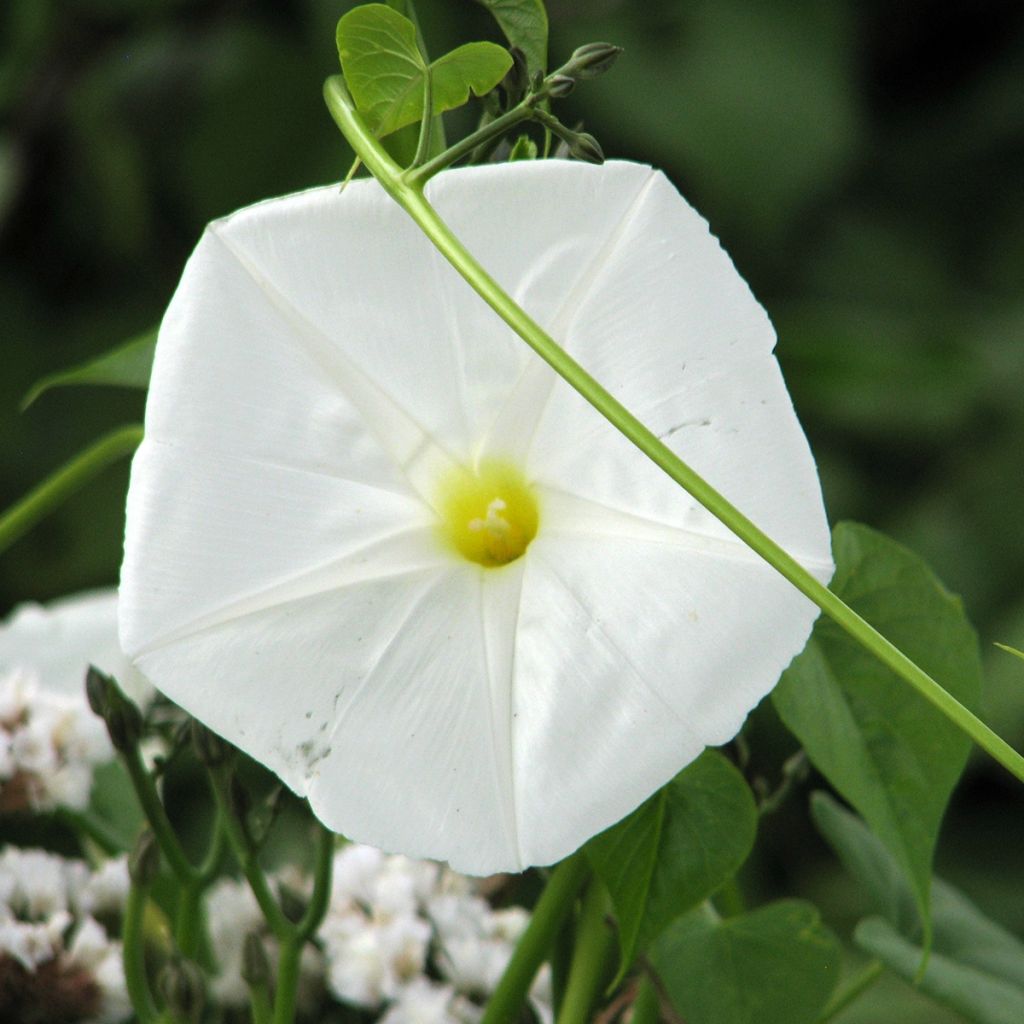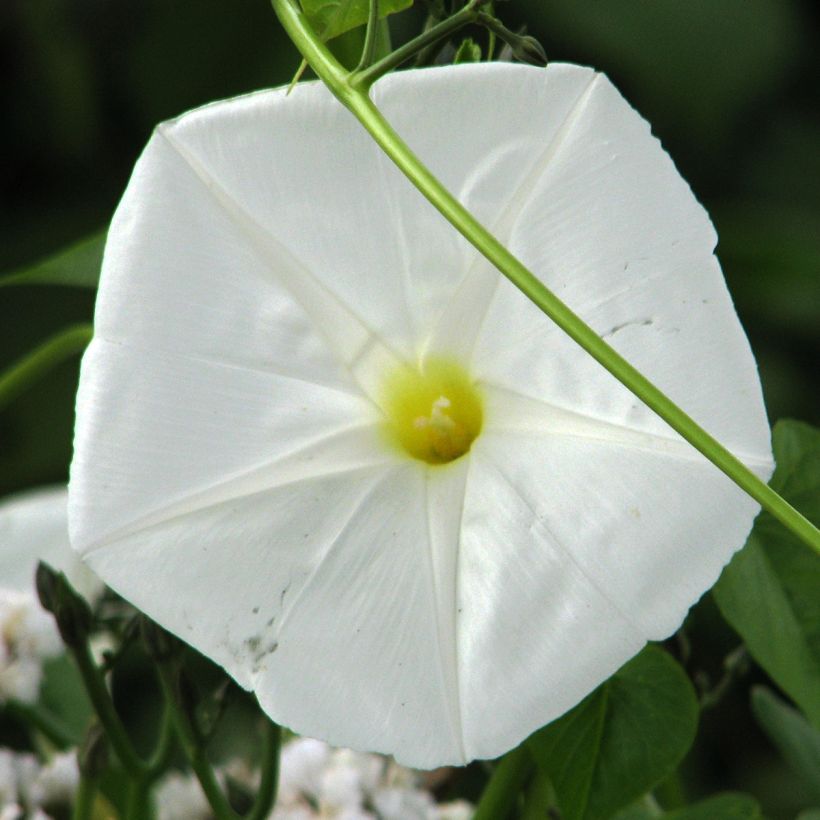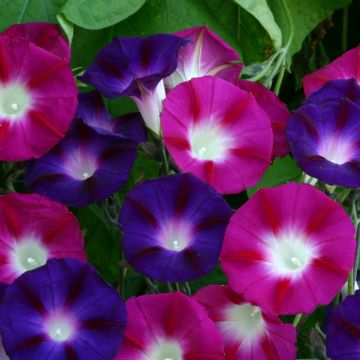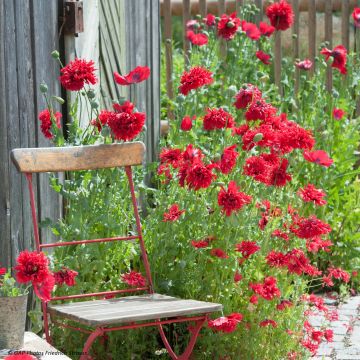

Graines d'Ipomée - Fleur de Lune
Ipomoea alba - Evening Glory
Ipomoea alba
Moonflower, Giant White Ipomoea, Evening Glory
Are growing. I love these special flowers thanks to the wonderful book "The Moonflowers" by Jetta Carleton. A must-read, and then enjoy these flowers for real.
Katia, 12/05/2022
Special offer!
Receive a €20 voucher for any order over €90 (excluding delivery costs, credit notes, and plastic-free options)!
1- Add your favorite plants to your cart.
2- Once you have reached €90, confirm your order (you can even choose the delivery date!).
3- As soon as your order is shipped, you will receive an email containing your voucher code, valid for 3 months (90 days).
Your voucher is unique and can only be used once, for any order with a minimum value of €20, excluding delivery costs.
Can be combined with other current offers, non-divisible and non-refundable.
Home or relay delivery (depending on size and destination)
Schedule delivery date,
and select date in basket
This plant carries a 6 months recovery warranty
More information
We guarantee the quality of our plants for a full growing cycle, and will replace at our expense any plant that fails to recover under normal climatic and planting conditions.
Would this plant suit my garden?
Set up your Plantfit profile →
Description
On warm summer nights, as soon as night falls, the large round flowers, white or pale pink, of this Ipomoea alba, also known as Moonflower, emerge, betraying their presence with their fragrance. The flowers close before noon in sunny weather and stay open longer in cloudy weather. This plant, native to tropical America, is a giant perennial in its country of origin, but it shows rapid growth that allows us to cultivate it as an annual in our climates with hot summers. It will decorate the veranda or greenhouse with its dark green heart-shaped foliage in large containers, protecting it from our harsh winters. It is a generous but voracious plant, appreciating fertile soil, regular watering, and full sun.
Ipomoea alba is a perennial evergreen that flowers at night and in cloudy weather, originating from tropical and subtropical regions of the Americas, from northern Argentina to northern Mexico, and up to Florida. Formerly classified in the Calonyction genus, it is now assigned to the Ipomoea genus, belonging to the Convolvulaceae family. It is an herbaceous plant with voluble stems that can reach 30m (98ft) in its native habitats, when its vegetation is not destroyed by frost. When grown as an annual, it will reach about 3m (10ft) in all directions. Its leaves are entire or trilobed, measuring 5 to 15cm (2 to 6in) long, heart-shaped, and dark green. Flowering occurs from July to September, with large, very round flowers, pink or white, measuring 8 to 14cm (3 to 6in) in diameter, in wide funnel-shaped or almost flat corollas, highly fragrant, carried by long peduncles. They open quickly in the evening, remain open at night until the rays of the sun hit them in the morning. Flowering is followed by the formation of hard, pointed, ovoid capsules, measuring 2 to 25mm (0 to 1in) in diameter, containing seeds with sparse hairs that are easy to sow.
The Moonflower is a fabulous, generous plant that will climb a warm wall where it will find conditions reminiscent of its origins. A southwest exposure seems favourable to enjoy its flowers for longer in the morning. The heat radiated by the wall will be beneficial to it. It can easily be grown in large pots that can be placed on the terrace during the summer to fill the air with fragrance on summer evenings. It is only in the mildest areas of our country that it will truly show its perennial nature, taking up all the space required by its natural luxuriance. Ipomoea alba can also be grown in pots and pinched like chrysanthemums, which makes it very floriferous. Its flowers can also be used to decorate a table on a festive evening.
This plant gets its name from the fact that it blooms its flowers under the moon, but also from the lunar shape of its flattened corollas.
Report an error about the product description
Ipomoea alba - Evening Glory in pictures


Flowering
Foliage
Plant habit
Botanical data
Ipomoea
alba
Convolvulaceae
Moonflower, Giant White Ipomoea, Evening Glory
South America
Other Ipomoea seeds
View all →Planting and care
Sowing period
Intended location
-
, onOrder confirmed
Reply from on Promesse de fleurs
Similar products
Haven't found what you were looking for?
Hardiness is the lowest winter temperature a plant can endure without suffering serious damage or even dying. However, hardiness is affected by location (a sheltered area, such as a patio), protection (winter cover) and soil type (hardiness is improved by well-drained soil).

Photo Sharing Terms & Conditions
In order to encourage gardeners to interact and share their experiences, Promesse de fleurs offers various media enabling content to be uploaded onto its Site - in particular via the ‘Photo sharing’ module.
The User agrees to refrain from:
- Posting any content that is illegal, prejudicial, insulting, racist, inciteful to hatred, revisionist, contrary to public decency, that infringes on privacy or on the privacy rights of third parties, in particular the publicity rights of persons and goods, intellectual property rights, or the right to privacy.
- Submitting content on behalf of a third party;
- Impersonate the identity of a third party and/or publish any personal information about a third party;
In general, the User undertakes to refrain from any unethical behaviour.
All Content (in particular text, comments, files, images, photos, videos, creative works, etc.), which may be subject to property or intellectual property rights, image or other private rights, shall remain the property of the User, subject to the limited rights granted by the terms of the licence granted by Promesse de fleurs as stated below. Users are at liberty to publish or not to publish such Content on the Site, notably via the ‘Photo Sharing’ facility, and accept that this Content shall be made public and freely accessible, notably on the Internet.
Users further acknowledge, undertake to have ,and guarantee that they hold all necessary rights and permissions to publish such material on the Site, in particular with regard to the legislation in force pertaining to any privacy, property, intellectual property, image, or contractual rights, or rights of any other nature. By publishing such Content on the Site, Users acknowledge accepting full liability as publishers of the Content within the meaning of the law, and grant Promesse de fleurs, free of charge, an inclusive, worldwide licence for the said Content for the entire duration of its publication, including all reproduction, representation, up/downloading, displaying, performing, transmission, and storage rights.
Users also grant permission for their name to be linked to the Content and accept that this link may not always be made available.
By engaging in posting material, Users consent to their Content becoming automatically accessible on the Internet, in particular on other sites and/or blogs and/or web pages of the Promesse de fleurs site, including in particular social pages and the Promesse de fleurs catalogue.
Users may secure the removal of entrusted content free of charge by issuing a simple request via our contact form.
The flowering period indicated on our website applies to countries and regions located in USDA zone 8 (France, the United Kingdom, Ireland, the Netherlands, etc.)
It will vary according to where you live:
- In zones 9 to 10 (Italy, Spain, Greece, etc.), flowering will occur about 2 to 4 weeks earlier.
- In zones 6 to 7 (Germany, Poland, Slovenia, and lower mountainous regions), flowering will be delayed by 2 to 3 weeks.
- In zone 5 (Central Europe, Scandinavia), blooming will be delayed by 3 to 5 weeks.
In temperate climates, pruning of spring-flowering shrubs (forsythia, spireas, etc.) should be done just after flowering.
Pruning of summer-flowering shrubs (Indian Lilac, Perovskia, etc.) can be done in winter or spring.
In cold regions as well as with frost-sensitive plants, avoid pruning too early when severe frosts may still occur.
The planting period indicated on our website applies to countries and regions located in USDA zone 8 (France, United Kingdom, Ireland, Netherlands).
It will vary according to where you live:
- In Mediterranean zones (Marseille, Madrid, Milan, etc.), autumn and winter are the best planting periods.
- In continental zones (Strasbourg, Munich, Vienna, etc.), delay planting by 2 to 3 weeks in spring and bring it forward by 2 to 4 weeks in autumn.
- In mountainous regions (the Alps, Pyrenees, Carpathians, etc.), it is best to plant in late spring (May-June) or late summer (August-September).
The harvesting period indicated on our website applies to countries and regions in USDA zone 8 (France, England, Ireland, the Netherlands).
In colder areas (Scandinavia, Poland, Austria...) fruit and vegetable harvests are likely to be delayed by 3-4 weeks.
In warmer areas (Italy, Spain, Greece, etc.), harvesting will probably take place earlier, depending on weather conditions.
The sowing periods indicated on our website apply to countries and regions within USDA Zone 8 (France, UK, Ireland, Netherlands).
In colder areas (Scandinavia, Poland, Austria...), delay any outdoor sowing by 3-4 weeks, or sow under glass.
In warmer climes (Italy, Spain, Greece, etc.), bring outdoor sowing forward by a few weeks.


















































